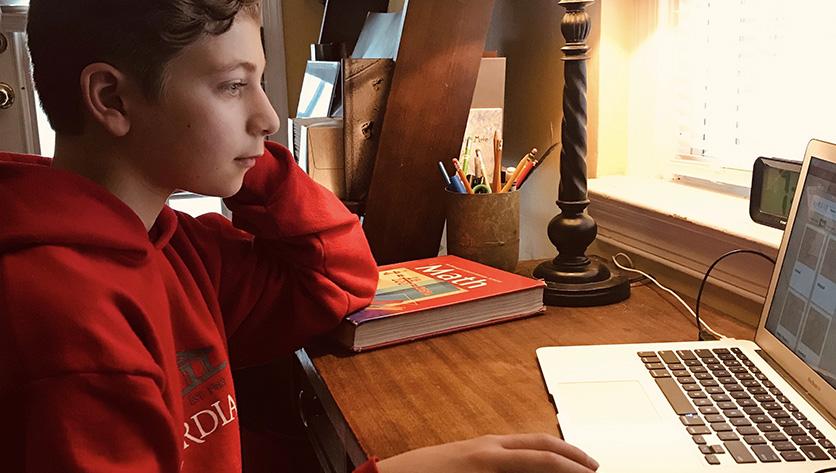Tips for Teaching Your Kids at Home During COVID-19

Social distancing laws and stay-at-home orders are requiring parents to not only figure out how to balance working, parenting and housekeeping, but also how to teach. Remote learning presents myriad challenges from access to devices and Wi-Fi to mental and emotional instability as kids respond to the reality of missing their friends and routine.
Remote learning shines a spotlight on the value and important role our world’s educators play in a child’s life. For parents that aren’t certified teachers, the thought of remote learning through the near future is overwhelming. But experts say parents shouldn’t be so hard on themselves.
“A parent is the expert on their child. Parents sell themselves short. They know what’s best. A parent is a child’s first teacher – teaching the child to walk, talk, read and count,” shares Patty Silver, assistant professor of education at Notre Dame of Maryland University (NDMU).
So how do you teach a child from home, when you aren’t the teacher? How do you manage multiple schedules and demand for devices with multiple children in varying grades? And, how do you possibly get any work in of your own in between assignments and teacher check-ins? Silver offers some tips that will help parents and children work toward a great outcome with at-home learning.
Set a schedule each week
Develop a schedule each week that takes into account each child’s schedule, assignments and your own workload. Work with the youngest child in the morning while the teen sleeps in. Then, while the youngest is doing independent work, help the teen as needed.
Engage the children in the planning
Work with each child to plan out a schedule that works best for them. Do they want to get all the work out of the way at one time, or do they prefer to space it out and take breaks? Empower the child to own his or her schedule. If the curriculum is broad, use the opportunity to explore a child’s interests – go outside, try a new project, find creative ways to incorporate science and math into an activity the child is eager to try.
Use technology to your advantage
There is a plethora of free, online resources from reading tools and science experiments to videos and creative physical education activities. Let kids take a break from assignments and get creative to learn something new. Check with your school for recommended resources, web sites and activities.
Be flexible
Your at-home schedule does not have to mirror a traditional week. If a parent has work that needs to get done during the week, schoolwork could be pushed to the weekend. Or the parent could adjust his/her schedule to work later in the evenings to accommodate the children’s schedules during the day. It’s okay to take a break from a rigorous schedule.
“Mental health is important. If the child is frustrated or challenged with learning a new concept, take a break. Maybe just read that day and come back to the assignment the next day,” suggests Silver.
The COVID pandemic has changed the way we live and learn, at least temporarily. This is a unique time in our world’s history. Encourage your child to write 15 minutes each day – it will help improve his/her skills but also provides an opportunity to share how the child feels, what he/she is seeing, and document the child’s experience during this special time.
For more information on NDMU’s education programs, please visit: NDMU School of Education.




